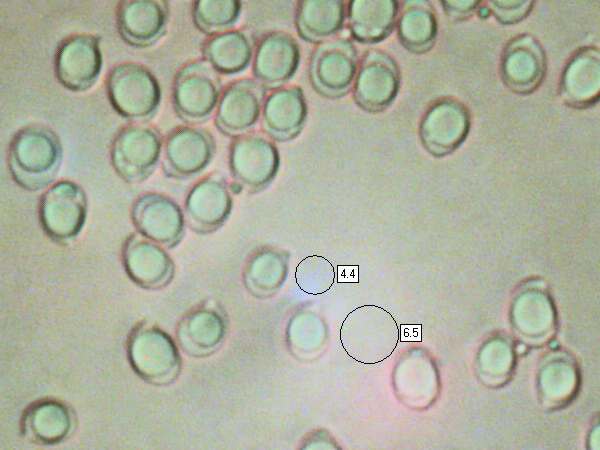Tricholoma columbetta (Fr.) P. Kumm. - Blue Spot Knight
Phylum: Basidiomycota - Class: Agaricomycetes - Order: Agaricales - Family: Tricholomataceae
Distribution - Taxonomic History - Etymology - Identification - Culinary Notes - Reference Sources
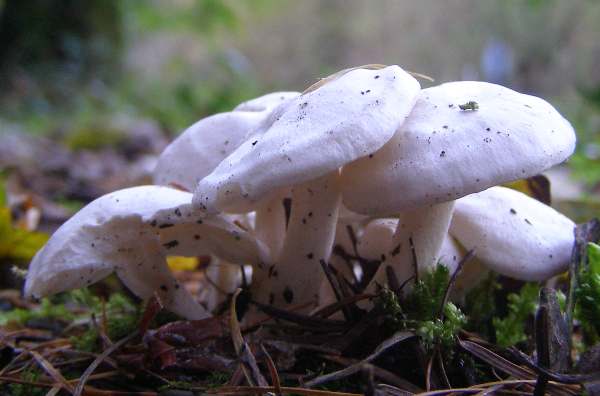
Another of the white knights, Tricholoma columbetta, is a very beautiful, fairly abundant (and reportedly edible) mushroom. These woodland fungi are often pure white with silky umbonate caps much the same size as those of Tricholoma album; however, the gills are attached to the stem without the significant notches that are characteristic of Tricholoma album.
The Blue Spot Knight is mycorrhizal with broadleaf trees and possibly also with conifers.
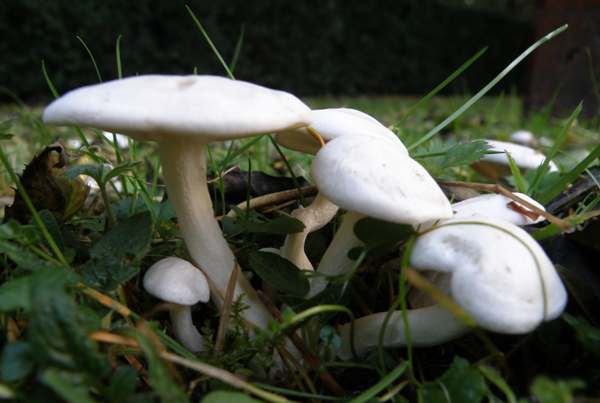
Distribution
Fairly common in Britain and Ireland, this gregarious mushroom is also found throughout most of mainland Europe.
Taxonomic history
The great Swedish mycologist Elias Magnus Fries established the basionym of this species in 1821, when he gave it the binomial scientific name Agaricus columbettus. (Most gilled fungi were in those days placed into a gigantic Agaricus genus, since made more manageable by redistributing most of its contents to other new genera.) It was the German mycologist Paul Kummer who in 1871 transferred this species to the genus Tricholoma, thus establishing its currently accepted scientific name Tricholoma collumbetta.
Synonyms of Tricholoma columbetta include Agaricus columbettus Fr.
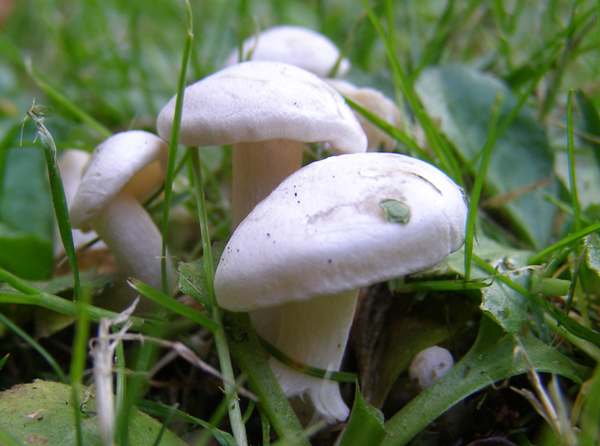
Etymology
Tricholoma was established as a genus by the great Swedish mycologist Elias Magnus Fries. The generic name comes from Greek words meaning 'hairy fringe', and it must be one of the least appropriate mycological genus names, because very few species within this genus have hairy or even shaggily scaly cap margins that would justify the descriptive term.
As a specific epithet the term columbetta means like a (white!) dove.
Identification guide
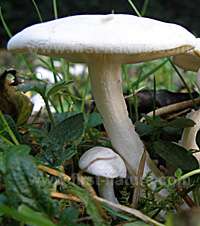 |
CapPure white, becoming cream when old, sometimes with a bluish flush or blue spots on the cap (and on the stem base); convex, flattening with a slightly wavy margin; smooth; greasy when wet; 5 to 10cm across. GillsWhite; crowded; sinuate. StemWhite, sometimes with a blue-green area at base; cylindrical; 4 to 10cm long, 1 to 2cm dia.; no ring. |
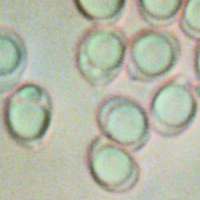 |
SporesEllipsoidal, smooth, 5.5-7 x 4-5.5µm; inamyloid.
Spore printWhite. |
Odour/taste |
Not significant. |
Habitat & Ecological role |
Ectomycorrhizal with broadleaf trees. |
Season |
Summer and autumn in Britain and Ireland. |
Similar species |
Calocybe gambosa, St George's Mushroom, occurs mainly in spring and early summer; it has a mealy odour. Tricholoma album has notched gills and its cap turns ochre and usually becomes umbonate at maturity. |
Culinary Notes
Although reported in some field guides to be edible and very tasty, the Blue Spot Knight is not much sought after. Anyone foraging forwhite-gilled woodland mushrooms must be extremely careful not to include any of the poisonous Amanita species such as Destroying Angel Amanita virosa or Deathcap Amanita phalloides - the latter sometimes occurs with a white cap while the former is invariably pure white and, to make matters worse, its stem ring sometimes falls away to leave a bare stem very similar to that of the Blue Spot Knight.
Reference Sources
Fascinated by Fungi, 2nd Edition, Pat O'Reilly 2016, reprinted by Coch-y-bonddu Books in 2022.
Kibby, G (2013) The Genus Tricholoma in Britain, published by Geoffrey Kibby
Dictionary of the Fungi; Paul M. Kirk, Paul F. Cannon, David W. Minter and J. A. Stalpers; CABI, 2008
Taxonomic history and synonym information on these pages is drawn from many sources but in particular from the British Mycological Society's GB Checklist of Fungi.
Fascinated by Fungi. Back by popular demand, Pat O'Reilly's best-selling 450-page hardback book is available now. The latest second edition was republished with a sparkling new cover design in September 2022 by Coch-y-Bonddu Books. Full details and copies are available from the publisher's online bookshop...

